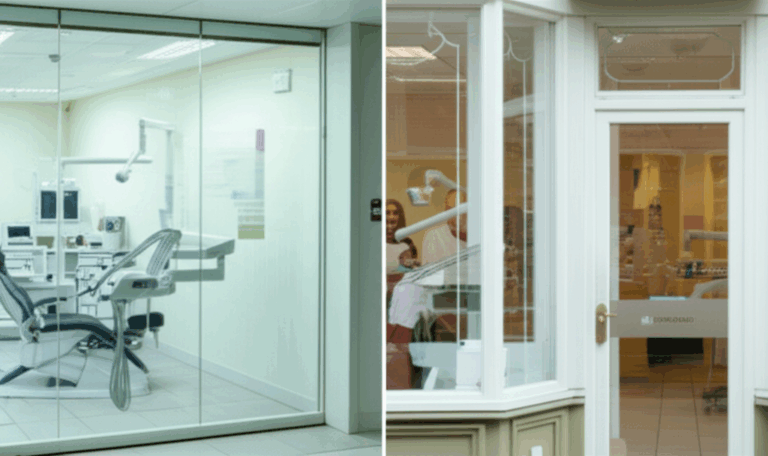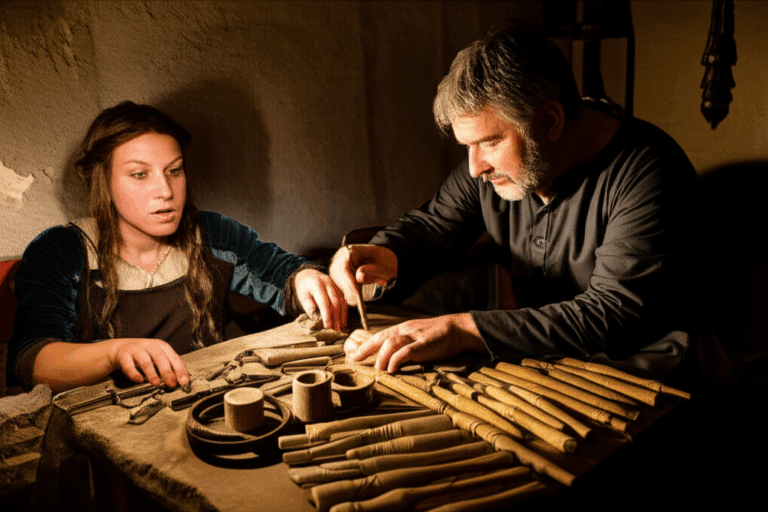
How Long Does It Take to Become a Veterinary Dentist? Your Complete Career Timeline
Table of Contents
Introduction: My Journey Toward Veterinary Dentistry
If you’re reading this, you might be asking yourself a tough but exciting question: “How long does it take to become a veterinary dentist?” Not that long ago, I was where you are—curious, maybe a bit confused, and wanting to know if this is something I could really do. Over the last several years, I’ve been through each step, from just being interested in animal health, to working as a veterinary dentist.
In this article, I’ll be your guide. I’ll tell you about each step, share what I learned, and give you a real look at the hard parts and the good parts of this job. If you want clear answers, numbers, and some real-life experience mixed in, you’re in the right place.
What is a Veterinary Dentist, and Why Does It Matter?
Before I get into the details, let me make it clear: a veterinary dentist isn’t just a “tooth doctor” for pets. These vets find and treat problems with teeth, gums, jaws, and even mouth tumors in animals, usually helping dogs, cats, exotic pets, and sometimes horses. I’ve seen for myself how important caring for animal mouths is—it can save an animal’s life or stop years of hidden pain.
Veterinary dentists do way more than just clean teeth. They fix broken jaws, do root canals, surgery for gum problems, and fix things that some animals are born with. It might sound narrow, but it really makes a huge difference in animal health. Honestly, when a pet can eat or play again—because their mouth doesn’t hurt—that makes all the extra training feel worth it.
How Long Does It Take? A Direct Answer Upfront
Let’s answer the main question right away. It usually takes 10 to 14 years after high school to become a board-certified veterinary dentist. This is the normal way in North America:
- 4 years of college/university
- 4 years of veterinary school (DVM or VMD)
- 1 year internship (usually a good idea, but not always needed)
- 3 years in a veterinary dentistry residency
- Time to study for and pass the board exams (often overlaps with the residency, but might take a bit more time for some people)
Some people finish faster if they skip the internship or do special programs, and others take longer if life gets in the way or the field is super competitive.
Step-by-Step Breakdown: The Journey to Veterinary Dentistry
Here’s what each main step looks like—the way I wish someone had told me before I started.
1. Undergraduate Education (Pre-Veterinary Focus)
Time: 4 years
Everything starts with college. Most future vets major in something with a lot of science—biology, animal science, or chemistry. I spent many nights studying hard for biochemistry and wishing I was better at organizing my time.
You’ll have to take classes like biology, chemistry, physics, maybe organic chemistry and math. Vet schools really care about your grades and how much you’ve worked with animals—so volunteer or shadow vets as much as you can. Some people I studied with even spent time working for a dental ceramics lab or at animal shelters, which helped them get into vet school.
Most vet schools in the US want you to take the GRE (a big test for grad school). Studying for that while handling all your classes is hard, but it pays off when you get in.
2. Doctor of Veterinary Medicine (DVM/VMD) Program
Time: 4 years
Vet school is very demanding. There are lots of lectures, labs, and real practice—all in just four years. I remember the first surgery I got to help with; I was so nervous, but my teachers were there to help.
These programs cover everything: how bodies work, drugs, animal behavior, and treating sick animals. You’ll learn about all kinds of animals, big and small. You’ll also do rotations in different areas—including dentistry, if your school has it. That’s where I knew for sure dentistry was my thing; when I helped fix a broken tooth and saw the dog get happy again, it was awesome.
At the end, you have to pass a really tough test called the NAVLE. Everyone is scared of it—but with good studying, you can get through.
3. General Internship (Optional but Recommended)
Time: 1 year (after vet school)
You don’t have to do an internship, but I really think you should if you want to be a specialist. These programs last a year. You get to practice everything from surgery to emergency care and anesthesia. The idea is to learn from more experienced vets.
When I did mine, I spent a lot of time in the surgery room and helping in busy animal hospitals, sometimes working all night. It was hard, but it helped me a lot when I applied for residency. I got to meet great mentors and see a lot of dental cases.
4. Veterinary Dentistry Residency Program
Time: 3 years
Now comes the big part. Getting into a dental residency is tough. There are only about 15 to 20 approved programs in North America, and usually only one or two spots each year. Be ready to compete.
During my residency, I was almost always at the clinic. My days were split between advanced dental surgeries, cancer cases in the mouth, research, and teaching new vets. If you do your residency with Diplomates of the American College of Veterinary Dentists (ACVD), you’ll learn a ton—including some pretty tough surgeries on dogs, cats, and sometimes weird animals.
Residents have to do hundreds of cases, publish a research paper, and talk about their work at meetings. I was really nervous the first time I had to share my research, but it made me much better at explaining things.
5. Board Certification Examination (ACVD Diplomate)
Time: A few months of study, then a multi-day test
This is the end—well, almost. After residency, you study for the ACVD board test. You need to dig deep into teeth, mouth diseases, anesthesia, and surgery skills.
You have to send in detailed records of the cases you did and have published some research. The test itself is very hard, with written questions, hands-on parts, and oral exams over several days. When I finally got the letter saying I passed and could call myself a Diplomate, I felt so happy—it’s a small group, maybe 300 of us in the world.
Veterinary Dentist Timeline at a Glance
Here’s a simple look at how long each step usually takes:
| Step | Typical Duration |
|---|---|
| Undergraduate Education | 4 years |
| DVM/VMD Program | 4 years |
| General Internship (optional) | 1 year |
| Dentistry Residency | 3 years |
| Board Exam Prep/Completion | Several months |
| Total | 10-14 years |
Some can finish in about 9-10 years by skipping the internship (not common), or it could take longer for people who do extra things, take breaks, or have to try the test more than once.
Factors That Can Change Your Timeline
No one’s path is exactly the same as mine. Here’s what can speed things up or slow them down:
- Faster College or Special Programs: If you can do an accelerated college-vet combo, you might save a year.
- Getting into Residency: Because residencies are so hard to get, some vets work a year or more while waiting.
- Personal Time Off: Some people take time for family, research, or other stuff.
- Different Country Rules: In other countries, the rules might be different. I know vets from Europe or Asia who took other certification paths.
But all the veterinary dentists I know have one thing in common: they never give up.
What Does a Veterinary Dentist Actually Do?
If you think this job is only about cleaning pet’s teeth, think again. As a veterinary dentist, I:
- Find and treat painful mouth infections and tumors
- Fix broken jaws and teeth
- Do root canals, crowns, and sometimes even braces for pets
- Remove tumors in the mouth (sometimes it saves their life)
- Help with safe anesthesia and pain control for tough mouth problems
- Teach other vets how to stop dental disease before it starts
One of my favorite memories is an old dachshund who wouldn’t eat because of bad teeth. After surgery and pulling some teeth, she was playing and eating again in a week. It’s the best feeling.
A vet dentist usually works on the hardest mouth cases, sent from regular vets. I work with other animal doctors—sometimes with surgeons or cancer doctors—when a problem is really tricky. Every day is new.
Career Outlook, Salary, and Demand for Veterinary Dentists
Now, the big question: is all this work and money worth it?
Jobs: There aren’t many board-certified vet dentists—about 250-300 in the world in 2023-24—so your skills are needed. You can work at animal hospitals, colleges, shelters, and even do research.
Pay: When I started as a specialist, jobs usually offered $120,000 to over $180,000 a year. The more skills and experience you have, the higher it goes. If you teach or do research, pay might be different, but the job still feels worth it.
The field is growing too. New materials, better ways to keep pets asleep safely, and cool new machines (sometimes borrowed from digital dental labs in human dentistry) mean you’ll always be learning.
Is Becoming a Veterinary Dentist the Right Path for You?
Here’s what no one told me: It takes a lot of time, effort, and patience to become a veterinary dentist. But if you like working carefully, enjoy solving hard problems, and really care about animals’ mouths, there’s nothing else quite like it.
A good vet dentist is:
- Careful: Mouth surgery is detailed work
- Patient: Some problems take months to fix
- Tough: It’s not easy to get in, and there’s a lot to learn
- Caring: You have to speak for pets who can’t say where it hurts
- Always learning: New things come out all the time
If you aren’t sure, see if you can shadow a veterinary dentist or find a mentor. Some of my best advice came from these experiences—they helped me know this was the right road for me.
Helpful Data: Timeline, Costs, and Competitiveness
Here’s a table to give you a quick idea, based on my experience and some info from trusted people like Dr. Joe Dental.
| Step/Cost | Typical Range |
|---|---|
| Total Time Post-High School | 10-14 years |
| Undergraduate Education | 4 years ($40,000 – $120,000+ for tuition/fees) |
| DVM/VMD Program | 4 years ($100,000 – $300,000+, public vs. private) |
| General Internship | 1 year (stipends: $35,000 – $55,000/year) |
| Dentistry Residency | 3 years (stipends: $35,000 – $55,000/year) |
| Board Certification Fees | $1,000 – $3,000 |
| Residency Spots | 15-20 programs in North America, 1-2 residents per program per year |
| Number of ACVD Diplomates | 250-300 worldwide |
| Average Starting Salary | $120,000 – $180,000+ |
| Job Outlook | High need for specialists; more people know pets need dental care |
Keep these numbers in mind as you decide. I wish I’d seen all this info this clear when I started.
Conclusion: Is This Long Road Worth the Investment?
Looking back, every step—from late-night studying in college, the busy days in vet school, long internship nights, and tough specialty training—was hard, but also good. Now, as a veterinary dentist, I get to help animals, speak for those who can’t, and work with great people every day.
Is it a long, challenging road? Yes. But if you really love helping animals, like mouth surgery, and are always ready to learn, this might be just what you’re looking for.
If you want to learn more about dental fields in general, check out this dental practical guide—it’s a nice place to start, whether you end up with people or animals.
Wherever you are in your journey—just beginning, deep in school, or thinking about specializing—I hope my story helps you find your way. Stick with it, and you’ll get a career that’s full of learning, surprises, and grateful pets and people.
Ready to give it a try? Reach out to a veterinary dentist near you, ask your questions, and see what the job is really like. Your future self (and lots of happy pets) will thank you.








